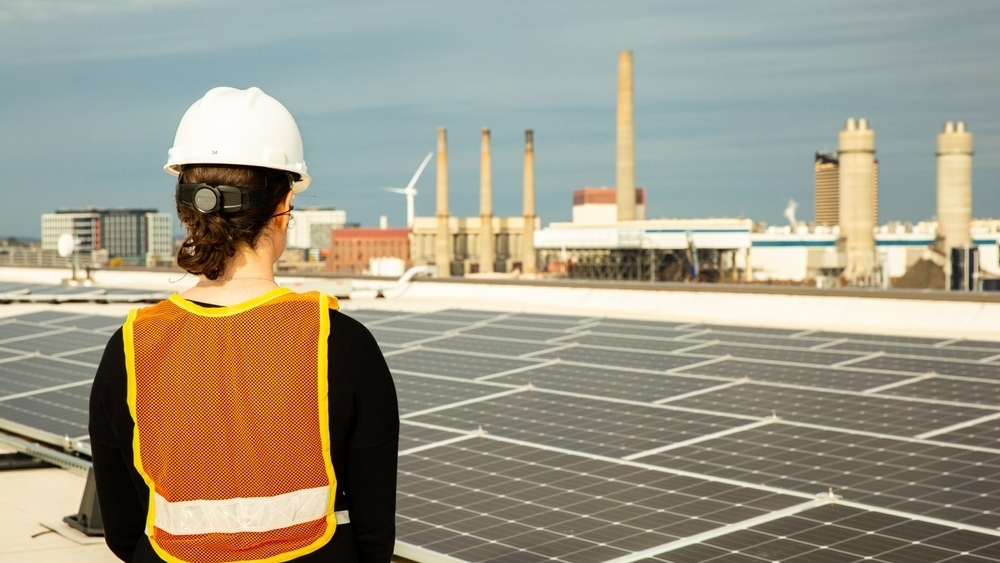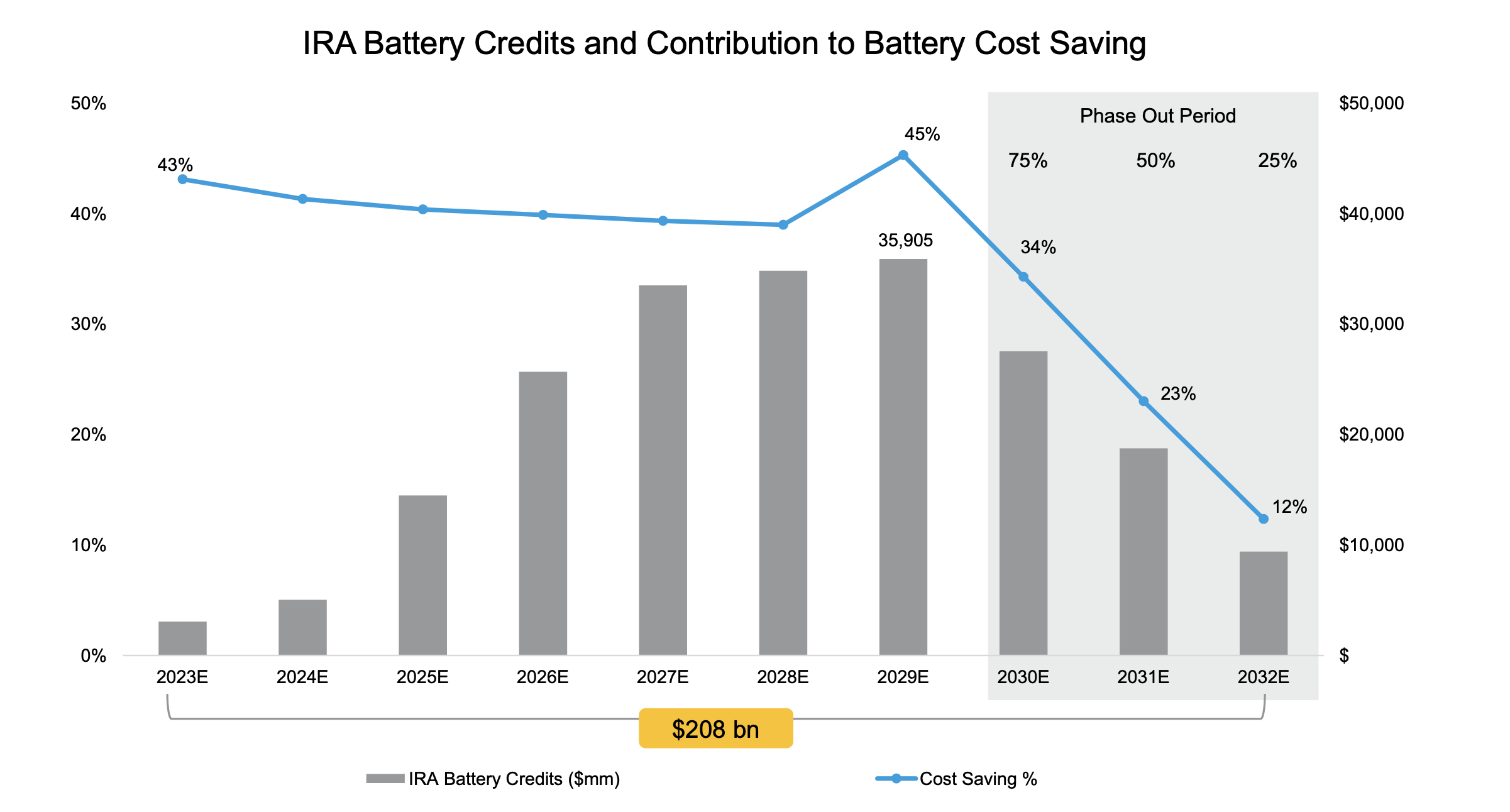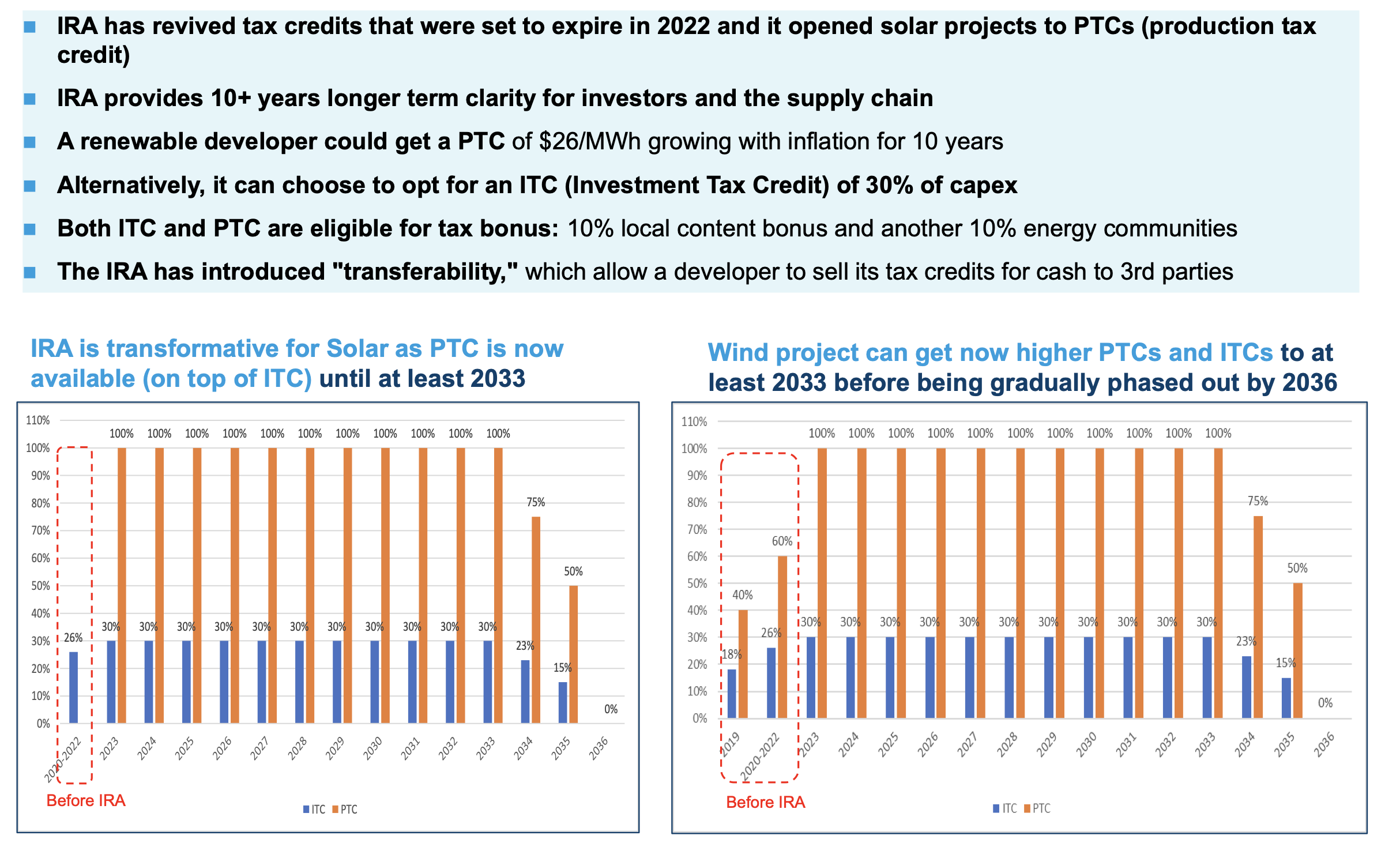
IRA deep dive: opportunities created ‘up and down’ the net-zero value chain
The US's Inflation Reduction Act and other green policies are bolstering clean energy investment, despite strong economic headwinds and the looming political risk of a second Trump administration
15 months on, and Biden’s historic green industrial plan is largely seen as an historic success.
The Inflation Reduction Act's (IRA) approximately $400 billion of federal incentives has already attracted $278 billion in new private clean energy investments, created 170,000 new jobs, and boosted energy security by on-shoring key green manufacturing processes, such as those needed for solar panels, which have previously been the preserve of China, according to research from Climate Power.
The IRA incentives, along with those of its sister policies the Infrastructure Investment and Jobs Act and CHIPS Act (collectively to be called the "green industrial plan"), amount to around $2 trillion in stimulus, and could attract trillions of dollars in private investment in the next five to ten years, according to Columbia Threadneedle analysts.
This enabling policy environment has created opportunities up and down the net zero value chain, as the far-reaching green industrial plan boosts not only clean energy and electric vehicles (EVs) but an entire ecosystem of businesses that indirectly benefit from the tax credits.
“Behind the headline grabbing announcements of new solar, wind and battery projects, there are other less visible but equally lucrative opportunities,” said Ashish Bhardwaj, portfolio manager at Fidelity. “We have allocated capital to companies responsible for those big announcements as well as companies that enable those companies.”
For example, Fidelity recently invested in Jacobs, a design and consulting company – useful for anyone considering setting up an EV or semiconductor factory – and even an old-fashioned rail company – essential for the increase in transportation required for onshoring green manufacturing processes.
Neither company is a direct tax credit recipient but both stand to gain as a second-level or third-level beneficiary.
Ashish explained that Fidelity’s “valuation sensitive” strategy looks for companies where “the future upsides have not yet been priced in”.
He also argued that the green industrial plan could double the US’s GDP growth rate in the next five to ten years, a testament to the far-reaching impact of the incentives.
A powerful market signal
Given the sheer scale of the impact, it’s unsurprising that the green industrial plan has affected different investors in different ways.
One notable attribute is the way it rewards long-standing clean energy investors.
“The IRA has granted a massive windfall to those who were already investing in renewables,” said Michael McGowan, head of North American infrastructure at Mercer. “It has also saved some projects that were on the margins and increased the penetration of renewables in infrastructure funds.”
While the US has always offered tax credits for certain infrastructure projects, it is the certainty of those tax credits over a long, ten year period that sets it apart, bolstering the project pipeline for clean energy developers.
“Some of the clean energy companies in our funds are performing better because of the anticipated contracts generated by the IRA,” said Leslie Samuelrich, president of Green Century Funds, a long-time clean energy investor. “That gives us a strong incentive to keep those companies in our portfolios.”
Leslie stressed the importance of the IRA as a powerful “market signal” that has helped resolve any lingering misgivings around the economics of clean energy.
It is a “green light” for investors to act on their values.
Partnering with asset managers
Big Canadian pension funds aside, most asset owners tend not to make direct investments in energy transition-related projects, according to Mercer’s head of sustainable investment for the Americas, Max Messervy.
That means partnering with the right asset manager – preferably one with a strong track record – is key to taking advantage of the “multiple different ways that the IRA affects the investment landscape”.
“This is an amazing opportunity,” said Messervy. “We’ve seen massive investments in not just classic renewables infrastructure but also the complementary supply chain and manufacturing base, as the US pushes to onshore key green manufacturing processes.”
That said, McGowan argued that the “best and easiest investments for pension funds” are still onshore wind, solar and batteries.

Industrials, materials and utilities
Andrew Smith, US equities client portfolio manager at Columbia Threadneedle, argued that industrials, closely followed by materials and utilities, are currently experiencing the strongest tailwinds generated by the US’s green industrial plan.
Domestic industrial production has especially benefited from the strong “onshoring and de-globalisation” theme of the incentives.
For example, the asset manager has allocated capital to materials company Livent, which is “one of only two" viable US-based producers of lithium”.
Lithium is a key component of electric vehicle batteries. Its production is currently dominated by China, a supply chain insecurity that the green industrial plan seeks to address.
Geography: a complex picture
Despite the obvious US-centric nature of the IRA, investors have told Net Zero Investor that the policy’s impact on the geographical weighting of portfolios is difficult to quantify, given that the IRA is open to both domestic and international investment.
For example, if a Japanese, Korean, or EU-domiciled corporate launches a US-based project off the back of the IRA, the pension funds who hold equity in those companies won’t see a geographical shift in their portfolios.
“Most global corporates want to put their incremental dollars in the US,” said Bhardwaj. “The IRA-related incentives are so strong that you can recoup so much of your investment just via the tax credit.”
Tax credits can also be sold onto third parties.
Another factor that complicates the geographical picture is the IRA’s so-called “friend-shoring” scheme, which enables companies that avail of IRA tax credits to source critical green components not just in the US but in countries with which the US has a free trade agreement, such as Australia, Canada, or Mexico.
“The US green industrial plan hasn’t altered the geographical distribution of our investments, because of the single-country nature of our portfolios,” said Smith. ““However, it has enhanced the investment case for companies across a range of sectors such as industrials, materials and utilities.”
While the IRA may form part of the investment thesis, Columbia Threadneedle, like many other investors, “doesn’t invest solely on the basis of policy tailwinds”.
Similarly, the insurance giant Zurich invests according to the location of its insurance businesses. While it is keen to explore IRA-related opportunities, the policy itself won’t affect the geography of its capital allocations.
Robeco, on the other hand, told Net Zero Investor that it has increased US investments following the IRA.
IRA softens the economic headwinds against renewables
In the last year, rising interest rates, supply chain constraints, and inflation have had a widely reported negative impact on the economics of renewables projects, especially off-shore wind.
The capital intensive nature of renewables projects, which are typically financed with around 50% debt, means they are particularly exposed to high interest rates.
The IRA, which came into the force at around the same time as these headwinds began to blow, has helped eased the impact and safeguard the long-term trajectory of renewables investing in the US.

For example, one of Columbia Threadneedle’s portfolio companies, Xcel, claims that the IRA has reduced the levelized cost of solar projects by 25% to 40%, and the levelized cost of wind projects by 50 to 60%.
“This helps them grow their earnings growth rate at a higher level than would otherwise have been possible,” explains Smith.
Without the IRA, some of the capital costs associated with such projects would have been unviable.
Xcel has also reported massive savings in its investments in the grid transmission infrastructure, thanks to the green industrial plan.
Stay tuned for Part II of Net Zero Investor's deep dive into the Inflation Reduction Act, which will explore the impact of a second Trump administration on green policymaking and how net zero investors are dealing with the political risk.




